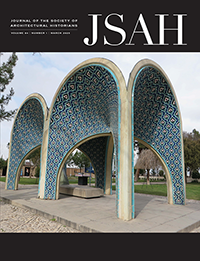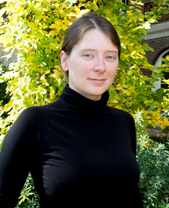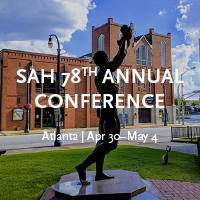-
Membership
Membership
Anyone with an interest in the history of the built environment is welcome to join the Society of Architectural Historians -
Conferences
Conferences
SAH Annual International Conferences bring members together for scholarly exchange and networking -
Publications
Publications
Through print and digital publications, SAH documents the history of the built environment and disseminates scholarshipLatest Issue:

-
Programs
Programs
SAH promotes meaningful engagement with the history of the built environment through its programsMember Programs
-
Jobs & Opportunities
Jobs & Opportunities
SAH provides resources, fellowships, and grants to help further your career and professional life -
Support
Support
We invite you to support the educational mission of SAH by making a gift, becoming a member, or volunteering -
About
About
SAH promotes the study, interpretation, and conservation of the built environment worldwide for the benefit of all
Dhaka: Day 2
We began the morning on a bridge crossing the Buriganga River, the birthplace of Dhaka. The city, once a small Mughal trade outpost in the seventeenth century, expanded dramatically as Adnan explained, when the Mughal governor, Islam Khan Chishti, made Dhaka the new provincial capital of Bengal in 1610.
The subahdar, Chishti, came to the area likely to establish landholdings in the richly fertile region and, following Richard Eaton’s thesis, the establishment of Islam as the predominant religion flourished on this frontier of the Mughal empire. Without becoming too mired in the debate, Eaton dismisses many of the reasons put forward to explain the phenomenon of a largely Muslim population that is surrounded on all sides by Hindu and Buddhist regions. Suffice it to say, according to Eaton, Islam grew in the region as an integral part of an agriculturally developing Bengal rather than a product of forced conversion or mass migration. [See Richard Eaton, The Rise of Islam and the Bengal Frontier, 1204-1760 (Berkeley: University of California Press, 1996)]
Throughout the following centuries the city grew northward from the river, a trend that continues, but remnants of Old Dhaka remain in the narrow, twisted corridors of buildings near the river. As it was a Friday in a predominantly Muslim city, most of the shops had not opened, and the streets were quiet with only a few people moving about on early morning errands. It was most likely a false impression of the normal weekday in old Dhaka, but nonetheless we could gain a sense of the layers of residential living, commercial activities, and religious shrines, temples and mosques that are so common. Although the capital of the Bengal province shifted to Murshidabad in the early eighteenth century, trade continued to be a vital part of Dhaka’s economy. Evidence of its global nature remains in some of the French and Portuguese street names spotting the old city as well as monuments such as the Armenian Church we visited. Begun in 1791, the church remains in use behind the low walls that separate the cemetery from the street.
Next, we walked back toward the river to Ahsan Manzil, built by Nawab Khwaja Abdul Goni in 1872 and named after his son. Though the building was closed because it was Friday, we were allowed to enter the grounds and see the exterior of the palace complex. Most striking was the sprawling staircase that extended toward the river from the main building.

Nawab Khwaja Abdul Goni: Ahsan Manzil (1872)
After some difficulty but with an enormous amount of skill, our bus driver wove through the old streets, taking us farther north in the city to Dhaka University. Our first stop was Curzon Hall (1904), an interesting comparison to Ahsan Manzil. Built by the British as a town hall for the Viceroy (though this is debated by some who claim the building was originally the library for Dhaka University), the building of Curzon Hall marks the reaction to the growing nationalist sentiments in Bengal at the turn of the twentieth century.
Adnan explained that the decision to partition Bengal into West Bengal and East Bengal/Assam (1905-11) was a strategic administrative tool both to divide the region and to monitor such growing nationalism. He pointed out the symmetry of the plan combined with the popular Indo-Saracenic aesthetic that culled from various Mughal elements. And, here again, we see the Bengali elements, such as the verandah, once imported by Mughal emperors to North India, now returned to Bengal translated and overlaid with political and cultural subtexts.
We continued on to the Teacher-Student Center (1962) by Constantinos Doxiadis to find an alumni reception that spilled into the wonderful interior green mall of the complex. Surrounded by a cafeteria and guest house, an auditorium, and multi-storied student union, this mall was a welcomed relaxing space in the bustling city outside its walls. Most impressive about the complex was how Doxiadis responded to the climatic conditions of the region within the aesthetics of modernism.
The relationship between interior and exterior, however, was even more pronounced and fluid in Muzaharul Islam’s College of Arts and Crafts (1953-55). The language of modernism here was certainly more poignant after learning Islam’s expectations of it. Islam went to the University of Oregon only a few years after the India/Pakistan Partition in 1947. Like Gandhi, he did not agree that religion should be the basis of separation and promoted the austerity of modernism as an architectural language free of any such associations. The underlying assumption, as Adnan so rightly pointed out, is the belief that architecture can influence society. Islam is a powerful figure in Bengali modern architecture whose buildings and influence are everywhere in the city.
After lunch, we visited the National Museum, which was packed on this Friday afternoon with families and teenagers. In the evening, we were treated to a variety of presentations at BRAC University. The President of the Institute of Architects Bangladesh, Mobasher Hussein, welcomed us both to the reception and more largely to the country of Bangladesh. SAH Representative, Ken Breisch, responded with gratitude and kind words. The US Ambassador, Dan Mozena, talked about the magic of Bangladesh and why the country is important to the US. Vice-Chancellor of BRAC University, Anin Shah, spoke about water issues the country faces. Professor Abu Sayeed M. Ahmed (who had joined us earlier in the day) gave an overview of Bengal architectural history, and Professor Parween Hassan followed with a discussion of the architectural language that has developed in Bengal. Professor Shamsul Wares (recognizable to our audience from the movie, My Architect) discussed contemporary architecture in Bangladesh. Professor Zainab Faruquin Ali ended the presentations with her discussion of the environmental point of view of Louis Kahn’s Assembly Building, which we are to visit the day after tomorrow.
 Gretta Tritch Roman, Ph.D. Candidate, Penn State University
Gretta Tritch Roman, Ph.D. Candidate, Penn State University Gretta Tritch Roman is a Ph.D. candidate in art and architectural history at the Pennsylvania State University. She earned a Bachelor of Architecture at the University of Arkansas and her Master’s degree in art and architectural history at the Pennsylvania State University where she completed a thesis titled, “La mise en scène icarienne: The Construal of Utopian Space in Nauvoo, Illinois, 1849-58.” Recently her research has focused on strategies of eclectic designs and the ways in which varying audiences respond to such buildings, opening discussions that have ranged from Lucknow, India, to Chicago, Illinois. Currently she is working on her dissertation under the working title, “Rivalry, Revivalism, and Ritual: Building the Grain Exchanges of the American Midwest, 1875-1930.”













Leave a commentOrder by
Newest on top Oldest on top